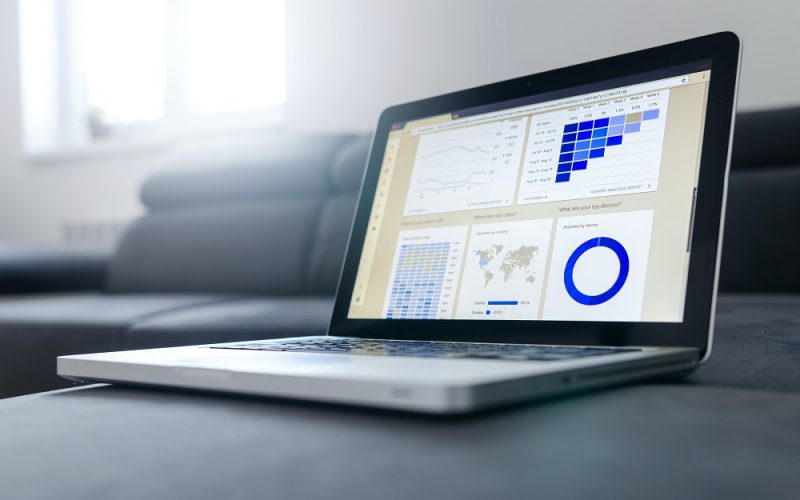In the fashion industry, being on top of trends and consumer preferences is the key between launching a hit product and facing an inventory full of unsold merch. Market research is the compass that guides fashion entrepreneurs, retail analysts, and marketing professionals in the right direction, helping them to stay ahead of the game.
Understanding the specifics of fashion market research, overcoming industry-specific challenges, and utilizing the right tools and resources are essential for any player in the fashion industry who wants to thrive. This comprehensive guide equips you with the knowledge and techniques necessary to excel in fashion market research.
Market Research for the Fashion Industry
Market research within the fashion industry is not merely about spotting trends; it’s about understanding the complex web of factors that influence buying decisions. From cultural shifts to economic indicators, a multitude of elements influence what we wear and why. Brands that translate this data into innovative products and marketing strategies are the ones that capture market share.
The fashion industry, notorious for its rapid shifts and turnovers, demands a heightened emphasis on timeliness and accuracy in market research. What was “in” last season might be long-forgotten by the time the next collection hits the shelves. Therefore, the methodology and tools must be as dynamic and trend-responsive as the industry itself.
Fashion market research typically encompasses four key components:
Consumer Behavior and Trends
Studying consumer behavior involves collecting data on shopping habits, brand loyalty, and demographics. To predict upcoming trends, fashion researchers need to be one step ahead, analyzing emerging micro-trends that reflect a changing social landscape.
Competitive Analysis
Understanding your competitors is crucial in the saturated fashion market. This includes identifying key players, benchmarking performance, and keeping an eye on their moves in terms of products, pricing, and promotions.
Product Research and Development
Researching products involves exploring concepts, materials, and designs that resonate with consumers. Feedback loops from surveys, focus groups, and prototype testing can be invaluable in refining products prior to launch.
Marketing and Branding
Effective marketing and branding research involves evaluating the impact of advertisements, the effectiveness of branding statements, and the resonance of the brand’s image with the intended audience.
How to do Fashion Market Research [Step-by-Step Guide]
Fashion is a dynamic industry fueled by trends and consumer preferences. Conducting thorough market research is crucial for any fashion business, from established brands to aspiring designers. Here’s a step-by-step guide to navigate the process:
Step 1: Define Your Objectives
What do you want to learn? Are you trying to validate a new product idea, understand your target audience better, or analyze competitor strategies?
Clearly defined goals will guide your research methods and ensure you gather relevant information.
Example: A handbag designer wants to launch a line of eco-friendly totes. Their research objective might be to understand consumer preferences for sustainable materials in handbags and their willingness to pay a premium.
Step 2: Find the Right Sources and Tools
There are two main types of research sources: primary and secondary.
Primary Research: Data you collect directly from your target audience. This can involve:
Surveys: Online questionnaires to gather a large pool of data on demographics, preferences, and buying habits. (e.g., Google Forms, SurveyMonkey)
Focus Groups: In-depth discussions with a smaller group to gain qualitative insights into attitudes and motivations.
Interviews: One-on-one conversations for detailed feedback from potential customers.
Pre-launching: This is a goldmine for market research in the fashion industry. By creating a landing page with your concept and gauging customer response, you gain real-time insights into demand, iterate on your design based on feedback, and avoid investing heavily in an idea that might flop. This direct interaction with potential customers makes pre-launching a powerful primary research tool.
Secondary Research: Existing data collected by others. Look for:
Industry Reports: Market research firms publish reports on fashion trends, consumer spending, and market size.
Here’s where to look:
- Euromonitor International: Provides comprehensive reports on various fashion segments like apparel, footwear, and accessories, with a global perspective.
- LWD (Leather Working Group): Focuses on the leather industry, offering reports on sustainability practices, sourcing trends, and market analysis.
- Nielsen: Offers reports on consumer spending habits and demographics, including insights relevant to the fashion industry.
Fashion Publications: Trade publications and online fashion magazines often feature trend forecasts and consumer analysis.
Here’s where to look:
- The Business of Fashion (BoF): Publishes insightful reports on various fashion industry topics, including market analysis, trend forecasts, and business strategies.
- Vogue Business: Offers in-depth reports on luxury fashion trends, consumer preferences, and the business landscape within the high-end segment.
- WWD (Women’s Wear Daily): Provides regular reports on fashion trends, retail analysis, and industry news, often with a focus on the US market.
Step 3: Analyze Your Insights
Once you have collected data, it’s time to make sense of it. Analyze survey responses and identify trends in demographics, preferences, and buying habits.
Look for common themes emerging from focus groups and interviews. Summarize key takeaways from industry reports and publications.
Step 4: Develop Buyer Personas
Use your research findings to create detailed profiles of your ideal customers. These buyer personas should include:
- Demographics (age, gender, income)
- Lifestyle and interests
- Fashion preferences and needs
- Shopping habits and preferred channels
Example: Based on your research, you discover a significant demand for eco-friendly totes among millennial women who prioritize sustainability and ethical manufacturing. This informs your buyer persona.
Pro tip: Make sure to leverage the power of online communities like those on Reddit. Use platforms like this to examine your target audiences threads and not what topics they discuss.
Step 5: Understand Your Competitors
Start by identifying your main competitors in the market and conduct a thorough analysis of their products, pricing strategies, marketing channels, and brand image. Understand the strengths and weaknesses of their offerings and how they position themselves in the industry.
Next, scrutinize the market to identify any gaps or unmet needs that your competitors are overlooking. This is your opportunity to carve out a niche for your brand. Think about what unique value proposition your brand can offer to fill these gaps and differentiate itself from the competition. Consider how your products or services can solve problems or meet needs that are currently being neglected.
By focusing on these areas, you can develop a strategic approach that leverages your brand’s unique strengths, setting you apart in a crowded marketplace and positioning you for success
Pro tip: To circumvent all the hassle of a detailed competitor analysis use tools such as the AI Market Research Assistant by Prelaunch.com. This tool allows you to analyze thousands of reviews and feedback to discover top customer praises and complaints simply by entering your competitor’s links.
Step 6: Summarize Your Findings and Take Action
Create a clear and concise report summarizing your research findings.
Use this information to make informed decisions about product development, marketing strategies, and pricing.
Step 7: Keep Checking In
Fashion trends and consumer preferences are constantly evolving. Monitor industry publications, conduct surveys periodically, and stay updated on competitor strategies.
Here’s a list of major fashion industry publications:
- Vogue
- Harper’s Bazaar
- Elle
- WWD (Women’s Wear Daily)
- The Business of Fashion (BoF)
- The Cut
- Dezeen
- Another Man (menswear)
- GQ (Gentlemen’s Quarterly) (menswear)
- Numéro (considered more avant-garde than mainstream publications)
By following these steps and continuously refining your research, you can gain valuable insights that will give your fashion business a competitive edge.
Tools and Resources for Fashion Market Research
Fashion market research equips you with valuable customer insights to design successful clothing lines, marketing campaigns, and pricing strategies. Here’s a breakdown of tools and resources categorized by primary and secondary research methods:
Primary Research
SurveyMonkey and Google Forms: Create online surveys to gather a large pool of data on demographics, preferences, and buying habits from your target audience. These tools offer user-friendly interfaces for designing questionnaires, distributing them electronically, and analyzing the collected data.
UserTesting: Conduct remote usability testing to see how potential customers interact with your clothing line prototypes or website. This online platform allows you to recruit participants, moderate testing sessions, and gain valuable insights into user experience.
Focus Group Discussion Platforms: Platforms like Lookback and User Interviews enable you to conduct online focus groups where you can moderate discussions with a smaller group to gain qualitative insights into attitudes and motivations.
Pro tip: Instead of scattering around to compile a combination of different primary research sources, get all your data in one place with Prelaunch.com. The idea validation platform lets you quickly create a landing page and share it with your friends and wider community to start generating first-hand feedback on your latest apparel concept.
Secondary Research
Industry Reports: Market research firms like Euromonitor International, LWD (Leather Working Group), and Nielsen publish comprehensive reports on fashion trends, consumer spending, and market size. These reports provide valuable data-driven insights into the industry landscape.
Fashion Publications: Stay updated on current trends and consumer analysis through trade publications like Women’s Wear Daily (WWD) and online fashion magazines like The Business of Fashion (BoF) and Vogue Business.
Social Media Listening Tools: Brandwatch and Sprout Social are social media listening tools that allow you to track brand mentions, analyze online conversations, and understand consumer sentiment about fashion trends and brands.
E-commerce Trend Reports: Platforms like Etsy and Trendalytics offer trend reports based on their sales data, giving you insights into what’s popular with online shoppers.
Additional Resources:
Fashion Trend Forecasting Services: WGSN and NellyRodi are fashion trend forecasting services that offer insights into upcoming trends, color palettes, and materials. Subscription fees apply, but these services can be invaluable for staying ahead of the curve.
By leveraging this comprehensive toolkit, you can conduct thorough market research that empowers you to make informed decisions and achieve success in the ever-evolving fashion industry.
Case Study [Start-up brand]: Reformation – Sustainable Style Takes Root
Brand: Reformation
Challenge: Reformation, a sustainable fashion brand launched in 2009, aimed to disrupt the industry with eco-friendly clothing but needed to validate their concept and target market.

Market Research Strategy: Reformation utilized a combination of online and offline methods:
- Social Media Engagement: Reformation actively engaged with their target audience on social media platforms like Instagram, conducting polls and surveys to understand their preferences for sustainable clothing.
- Trend Analysis: The company closely monitored fashion trend reports and social media conversations to identify styles and silhouettes in high demand.
- Customer Reviews: Reformation analyzed customer reviews of their existing products to understand what resonated with their audience and identify areas for improvement.
Key Insights: The research revealed a strong consumer interest in sustainable fashion, particularly among millennials and Gen Z. They identified a demand for trendy yet timeless pieces made with eco-friendly materials.
Action Taken:
- Focused on using recycled and sustainable materials like organic cotton and Tencel.
- Developed a core collection of versatile pieces that aligned with current trends but offered longevity.
- Utilized social media to showcase their commitment to sustainability and connect with environmentally conscious consumers.

Results: Reformation’s market research ensured their products catered directly to their target audience’s desires. Their focus on sustainability and trendy styles propelled their growth, establishing them as a leader in the sustainable fashion movement.
These case studies illustrate how established and start-up brands can leverage market research to gain valuable customer insights, adapt their offerings, and achieve success in the dynamic fashion industry.
Overcoming Challenges in Fashion Industry
The fast-paced and ever-evolving nature of the fashion industry presents unique challenges for market researchers. Here are some common roadblocks and how to navigate them:
Challenges
Fickle Consumer Tastes: Trends shift quickly, making it difficult to predict what will be popular next season.
Social Media Influence: Viral trends and influencer marketing can significantly impact buying decisions, adding a layer of complexity.
Data Saturation & Inaccuracy: Consumers may not accurately report their preferences or be swayed by marketing messages in surveys.
Reaching Target Audiences: Identifying and engaging with specific demographics across diverse online and offline channels can be tricky.
Fast Response Times: Fashion cycles are short, requiring research to be agile and deliver insights quickly.
Solutions
Embrace Trend Forecasting: Utilize trend forecasting services and analyze historical data to identify emerging trends with long-term potential.
Monitor Social Media Conversations: Track social media buzz, analyze influencer endorsements, and engage with online communities to understand real-time trends.
Employ Qualitative Research Methods: Conduct focus groups or in-depth interviews to gain deeper insights into consumer motivations and purchase decisions.
This is easier said than done. So a more realistic alternative is to set up a landing page on using the Prelaunch concept validaiton tool to start gaining real insights into purchase intent, as well as what could be improved.
(e.g. You might offer a garment in certain colors and not others. Based on feedback that is conveniently complied into a single Dashboard you’ll be able to learn what iteration is most popular with your target audience, who they are both demographically/psychographically and and even the optimal price point to set.)
Utilize Diverse Research Methods: Combine quantitative surveys with qualitative methods like focus groups to get a more holistic picture of consumer preferences.
Partner with Social Listening Platforms: Track brand mentions, sentiment analysis, and competitor activity to gain real-time market intelligence.
Rapid Prototyping & A/B Testing: Create low-fidelity prototypes of designs or marketing campaigns and conduct A/B testing to gather quick feedback and iterate quickly.
Conclusion
Market research is the backbone of success in the fashion industry. By meticulously studying consumer behavior, keeping a finger on the pulse of trends, and analyzing the strategies of competitors, fashion professionals can craft a robust business model. Utilizing the right tools, case studies, and overcoming challenges, your path to informed decision-making is set.
In a realm where yesterday’s fad is tomorrow’s old news, thorough market research ensures you’re always on the cusp of what’s next in fashion. It’s the secret to crafting not just great products, but legacies.
FAQ
What is fashion market research?
Fashion market research is the systematic gathering, recording, and analysis of data that pertains to the market’s preferences, economic indicators, and various other factors that contribute to the behavior of fashion consumers. This research helps brands and retailers understand what products to create, how to promote them, and at what price point.
Who should be conducting fashion market research?
Anyone involved in the lifecycle of a fashion product should be involved in market research to some degree. This includes designers, manufacturers, retailers, marketers, and any other professionals with a vested interest in the success of a product in the market.
What types of market research are most appropriate for the fashion industry?
A mix of qualitative and quantitative research methods are most appropriate for the fashion industry. This includes surveys, focus groups, trend analysis, and consumer panel studies, among others. These methods help capture both broad market trends and individual consumer preferences.




